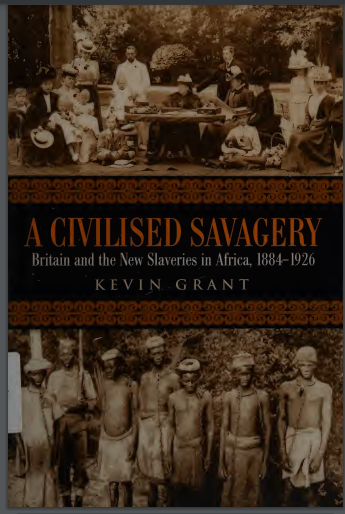
A Civilised Savagery Britain and the New Slaveries in Africa, 1884-1926
Author: Kevin Grant More Details‘ The path is strewn with dead men’s bones. You see the white thigh-bones lying in front of your feet, and at one side, among the undergrowth, you find the skull. These are the skeletons of slaves who have been unable to keep up with the march, and so were murdered or left to die.’
Henry Nevinson, a British journalist, thus recounted his travels through the Hungry Country, an arid region of sandy terrain and forests of barren trees, along the main slave route in the Portuguese colony of Angola. He had departed in 1905 from the coastal town of Benguela, then followed the route through the district of Bié and across the Luanza River into central Africa. It was a path of age-old suffering and new euphemisms. The Portuguese government had long since outlawed slavery, so the slave traders now called themselves “labor merchants.” These merchants traveled deep into the interior to exchange guns and liquor for slaves, whom the merchants then marched back to the coast to be sold. Up to half of the slaves did not survive the march to the coast, leaving an intermittent trail of bones and shackles that stretched for hundreds of mile
